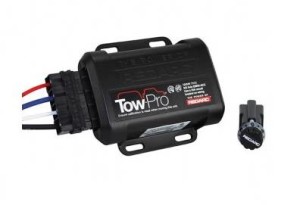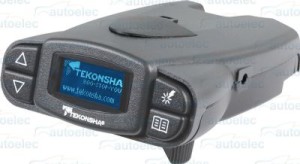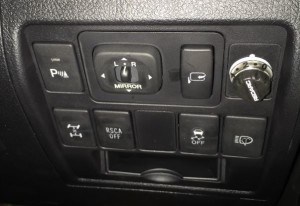Electronic Brake Controller Comparison – Tekonsha vs Redarc
 The number one consideration when towing any trailer is safety and it is absolutely paramount when it comes to big trailers and caravans. While caravans are fitted with all manner of safety systems, it the connection to the towing vehicle that is important and the brake controller forms an integral part of that link. With trailers weighing in excess of 2000kgs, some form of electronic brake control is required under Australia Vehicle standards. These must meet certain requirements including the ability to control the brakes of the trailer from the driver’s position. Two brands have become synonymous in the market with their electronic brake controllers: Tekonsha and Redarc. We have been in the unique position to have now owned both the Tekonsha P3 and the Redarc TowPro, both top of the range brake controllers for their respective brands. Here we compare both in real world testing.
The number one consideration when towing any trailer is safety and it is absolutely paramount when it comes to big trailers and caravans. While caravans are fitted with all manner of safety systems, it the connection to the towing vehicle that is important and the brake controller forms an integral part of that link. With trailers weighing in excess of 2000kgs, some form of electronic brake control is required under Australia Vehicle standards. These must meet certain requirements including the ability to control the brakes of the trailer from the driver’s position. Two brands have become synonymous in the market with their electronic brake controllers: Tekonsha and Redarc. We have been in the unique position to have now owned both the Tekonsha P3 and the Redarc TowPro, both top of the range brake controllers for their respective brands. Here we compare both in real world testing.
These are proportional brake controllers in that the amount of braking force applied by the trailer’s brakes varies with the amount of braking effort of the tow vehicle. This differs vastly from non proportional controllers that just apply the brakes at one setting no matter how much braking is being applied by the driver. It is a much more comfortable and controlled method of braking and helps avoid wheel lockup. Once you’ve had a proportional system, you will never go back to a non proportional controller.
Both of these units are very different in their design. The Tekonsha is designed to be mounted as a complete unit, most commonly under the dash-board or in a spare cavity. The Redarc has a facia mounted control knob and a remotely mounted control box. Because of this fundamental difference, the way these controllers operate is vastly different as is their feature set.
under the dash-board or in a spare cavity. The Redarc has a facia mounted control knob and a remotely mounted control box. Because of this fundamental difference, the way these controllers operate is vastly different as is their feature set.
The Tekonsha is a complete package offering a front LCD display that gives the driver a range of information about the braking system settings and the associated electrics. Of note is the troubleshooting menu which can give such information as main battery voltage and brake light current draw. Very helpful in diagnosing faults. The manual application of the trailer brakes is achieved by moving a lever at the bottom of the unit. Brakes are applied proportionally according to the lever position. All this functionality comes at a cost. The unit is quite large, about the size of 2 cigarette packets end on end, and in the limited real-estate on the modern car dashboard, finding a suitable location to mount it can be difficult especially with the introduction of knee air bags in many new vehicles.

The Redarc TowPro does not have a space issue. The control knob can be fitted into any spare switch panel or even a small flat section of the dash. Its a very neat fitting. The control box can then be mounted anywhere, usually behind the dashboard. This means you may have to take apart the dashboard to mount it properly. If this is a daunting prospect, take it to an auto-electrician to do the job for you. Just ensure they are aware of the correct mounting options for the control box. It must be mounted securely to a flat surface, not just wire-tied to a bundle of cables.
The Redarc’s manual braking is achieved by pushing in the adjustment knob. When I first used the unit in manual mode, I thought it was only available at the one setting however I have since discovered that the brakes can be applied proportionally by turning the control knob while it is pressed in. It s a little confusing at first but once you’ve done it a few times, it becomes second nature.
Both units self calibrate once you’re on your way. The Redarc can be adjusted according to the load by turning the knob. The Tekonsha’s braking effort can be boosted using the setting in the screen menu. Arguably, the Redarc is the easier of the two to operate and, where the Tekonsha has a wealth of information available on its bright LCD screen, the Redarc gets away with a simple tri-colour LED to tell you what’s happening.
In use both work extremely well. The Tekonsha is more for the techno driver who likes to see what’s happening with the system, whereas the Redarc is more for those who like to just set and forget their brakes and get on with driving. The Tekonsha is slightly better when it comes to manual overide control, but the Redarc looks great and gives the appearance it was fitted by the manufacturer. On the road the 2 are very similar. My Tekonsha would lock the brakes on the trailer when first heading off but would be fine after that. The Redarc seems to give better adjustment of the braking effort. Occasionally I’ve found the need to adjust the setting when driving in slow stop start traffic to avoid the trailer brakes ‘overbraking’.
Pressed for a decision, I think I prefer the Redarc Tow Pro but its a very close thing. If I had to fix a problem with the trailer brakes out in the bush, I’d want the Tekonsha diagnostics however, considering our current tow vehicle is Kylie’s Landcruiser and she insists we keep the vehicle’s interior as stock as possible, the Redarc’s ‘stealth’ installation wins in the end.


